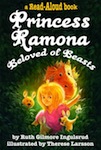59 Kids Sermons for Year B of the Revised Common Lectionary
Features sermons from the Gospels of Mark and John
Inspiring foreword by Walter Wangerin, Jr.
Sitting on the Rainbow
Review by Paul Wee
Katharina and Martin Luther would have loved this little book of sermons for children. Warmed by the Kachelofen at their home in the Wittenberg university, with Johannes, Magdalena, Martin, Paul, Margaretha – and who knows how many children from the neighborhood – at his feet, one can well imagine how father Martin would have acted out the stories with feeling, laughter and a bit of homemade, dramatic flair.
Contrary to widespread opinion, the evangelical Reformation of the 16th century did not find its primary driving force in the court of Charles V or in the academic halls of the university of Elector Friedrich the Wise. It was driven rather by the creative energies of common people who suddenly discovered the freedom of the gospel through the letters, prayers, songs and sermons that found their way from the pens of the Reformers to the printing shop of Lukas Cranach, and from there into the homes of people all over Europe. What won the hearts of the common people was not so much the erudite theological treatises – as important as these were – but the concrete expressions of the proclaimed Word through devotional literature, stories, hymns, puppet dramas and plays that brought delight to the masses, especially to the children. It is in this powerful tradition that this most recent book of sermons for children by Ruth Gilmore finds its place.
To understand the heart of the evangelical Reformation one must seek to catch a glimpse of the family gathered around the hearth to listen to father or mother read from the Small Catechism or pray a prayer from Luther‘s equally popular, A Very Good and Useful Book of Prayers It is to follow evangelical theologian Argula von Grumback as she traveled to villages in Bavaria, telling stories, encouraging the role of mother as „house preacher“ and speaking about the power of baptism to eradicate the barriers of gender and class. It is to listen in on the conversation of the women who gathered with their children in the sewing rooms to read the latest pamphlet and talk about the meaning of the gospel for their daily lives.
The children’s sermons by Ruth Gilmore’s represent a genre that fits nicely within the grass-roots movement that swept through Europe in the 16th century. The ability to capture the meaning of faith for daily life is her very special gift to the church. If the book has a weakness, it lies in an occasional lapse into sentimentality and moralizing. But the overwhelming majority of sermons are filled with realism, surprise and sheer delight, allowing the living Word to take flesh, not only in the lives of children, but in the lives of the adults who listen in. An Advent sermon, for example, calls for the children to be on “sharp lookout“ (Mark 13: 32-37) for the story-teller’s return through a door off the chancel. When the children are “distracted“ and miss the return, they learn something profound about the watchful attitude of Advent. The meaning of repentance as “turning around“ (Mark 1, 4-11) is illustrated by a walk down the aisle and an abrupt about-face, while the tearing of a sheet provides immediate insight into the meaning of a difficult passage (Heb. 10: 19-25) about the high priestly role of Jesus. The children will not soon forget their discovery of God’s “precious gift†(Ps. 127) when they open the lid of the box and see themselves in a mirror.
Although Sitting on the Rainbow is designed for the children’s sermon time in the worship service of the congregation, there is no reason why it might not also be used in the home. Such a practice, it might be recalled, was well known in the household of Katharina and Martin Luther. It contributed in fact to one of the most powerful movements of evangelical renewal in the history of the church.
Paul Wee
Wittenberg, Germany
